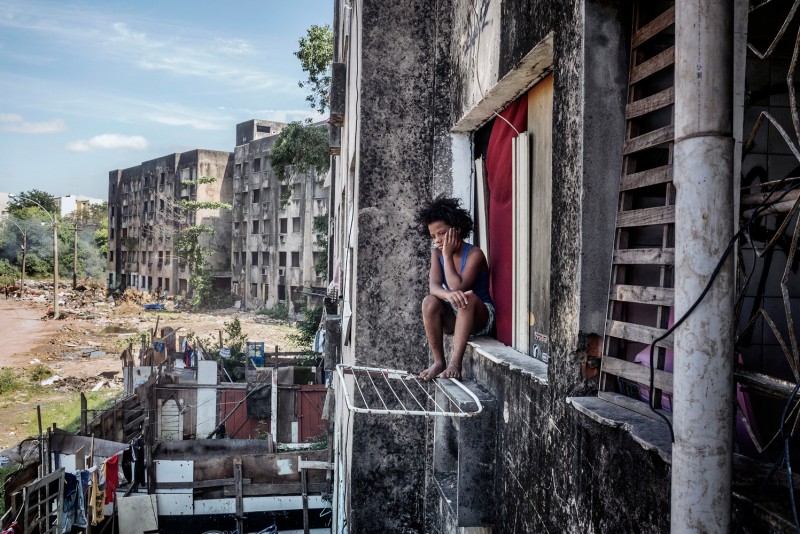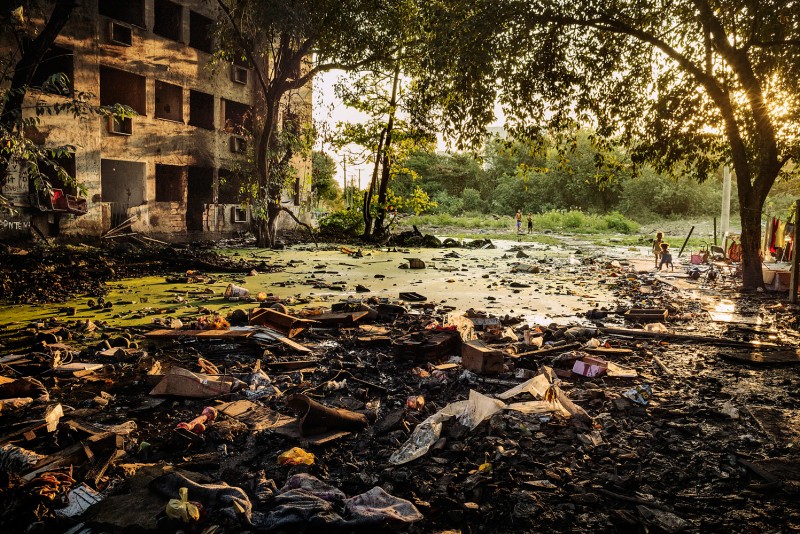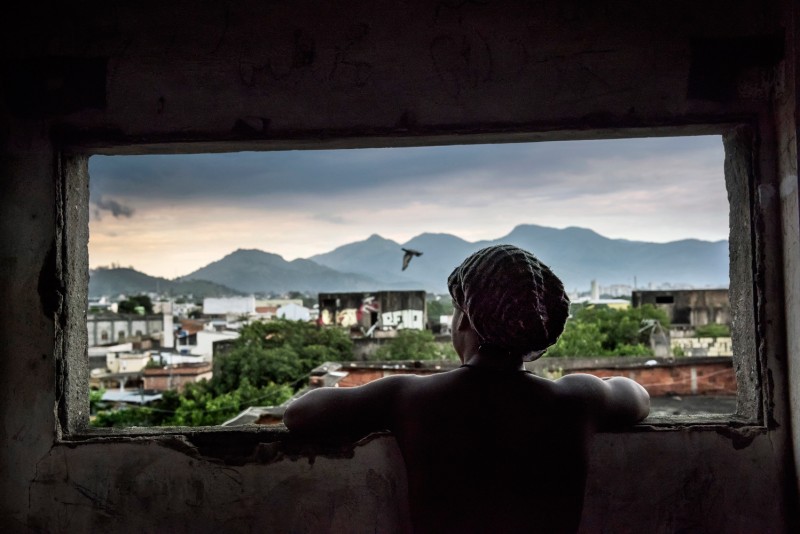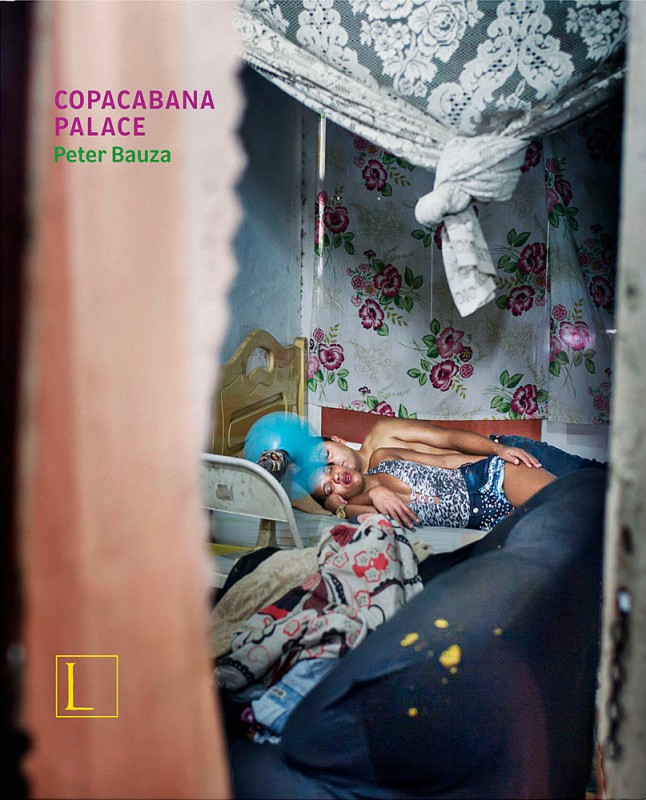The focus of the German photographer’s new photo book is not on the legendary luxury hotel located at the famous beach in Rio de Janeiro; instead, Peter Bauza’s powerful photo series presents the story of a derelict housing project on the western edge of the Brazilian metropolis.
The focus of the German photographer’s new photo book is not on the legendary luxury hotel located at the famous beach in Rio de Janeiro; instead, Peter Bauza’s powerful photo series presents the story of a derelict housing project on the western edge of the Brazilian metropolis. Far away from the fancy, palatial hotel and Rio’s tourist promenades, around 300 families live in a housing project started, but never completed, for the middle classes thirty years ago. Six buildings have become a place of refuge and hope for around 1000 people – sem teto, sem terra (without roof, without land) – who have made their homes in the undignified and appalling, skeletal concrete structures.
Bauza went there for the first time three years ago. The complex has been given many names: Jambalaya (after a traditional Creole dish or a TV show of the same title), Carandiru (after an infamous Brazilian prison), or, with obvious sarcasm, Copacabana Palace, a name the photographer found painted in graffiti on a wall. The disintegrating, multi-storied structures have no water, no proper electricity network; there is no glass in the windows, no doors and, of course, no elevators; some of the apartments have collapsed and everything is damp. The walls are sooty and dirty, and an awful stink pervades the streets and spaces around the buildings. In fact, the place could be defined as a kind of purgatory, yet Bauza’s colour-intense pictures manage to tell a different story: he captures moments of everyday life, the people’s love of life, their hopes and dreams; but without trying to beautify the hostility of the setting.
The series is much more about the strength and solidarity of this involuntary community, that tries to survive with courageous self-determination. “I needed to give this minority a face and a voice; but it wasn’t to be voyeuristic but done with dignity,” the photographer explains. After initial skepticism on behalf of the residents, Bauza managed to gain their trust and was able to move around freely for eight months, which resulted in this intimate perspective.
For Bauza, Copacabana Palace is a typical example reflecting the situation of millions of Brazilians fighting to survive, trying to get ahead in equally tough conditions. Bauza began his project at a time when billions were being spent on preparations for the Summer Olympics. Nowadays the financial crisis is even more dramatic, and none of the Olympic funds stretched this far. According to Bauza, “there are a few more bus, train and metro connections, but they are very far from our Copacabana Palace and these people. Very sad, in fact, as it’s just 60 kilometres away from all the wealth, but far enough away to remain hidden.” Ulrich Rüter
Peter Bauza
Copacabana Palace
208 pages, 185 colour photographs
24 × 30 cm, German, English, Portuguese
Hardcover
Edition Lammerhuber







